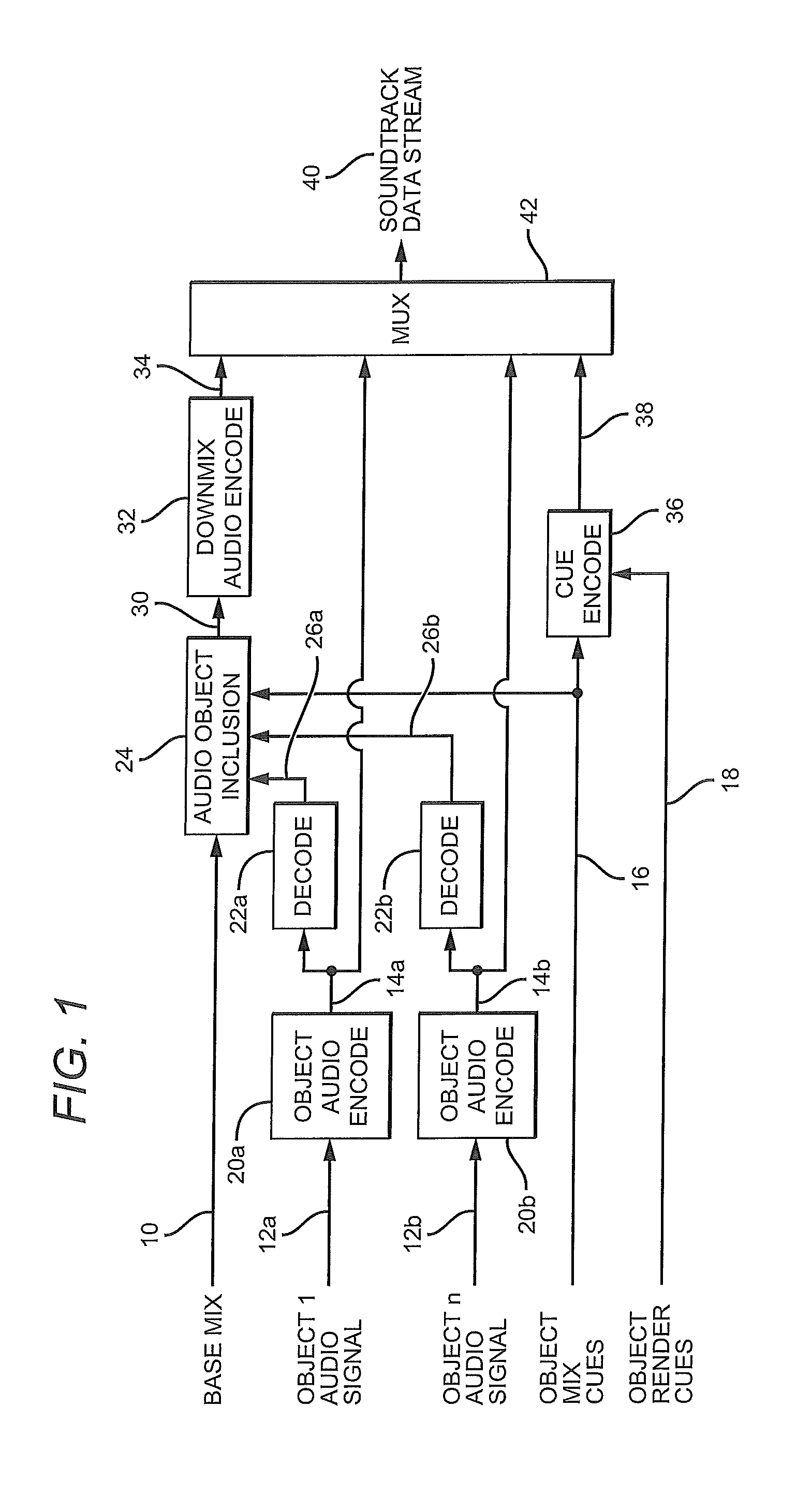Encoding and reproduction of three dimensional audio soundtracks
a three-dimensional audio and soundtrack technology, applied in the field of audio signal processing, can solve the problems of incompatibility with legacy consumer surround sound playback equipment, spatial audio formats are incompatible with legacy equipment and installations, and the ability to reliably and accurately encode and reproduce three-dimensional audio cues of natural sound fields, so as to achieve no loss of quality
- Summary
- Abstract
- Description
- Claims
- Application Information
AI Technical Summary
Benefits of technology
Problems solved by technology
Method used
Image
Examples
Embodiment Construction
[0042]The detailed description set forth below in connection with the appended drawings is intended as a description of the presently preferred embodiment of the invention, and is not intended to represent the only form in which the present invention may be constructed or utilized. The description sets forth the functions and the sequence of steps for developing and operating the invention in connection with the illustrated embodiment. It is to be understood, however, that the same or equivalent functions and sequences may be accomplished by different embodiments that are also intended to be encompassed within the spirit and scope of the invention. It is further understood that the use of relational terms such as first and second, and the like are used solely to distinguish one from another entity without necessarily requiring or implying any actual such relationship or order between such entities.
GENERAL DEFINITIONS
[0043]The present invention concerns processing audio signals, whic...
PUM
 Login to View More
Login to View More Abstract
Description
Claims
Application Information
 Login to View More
Login to View More - R&D
- Intellectual Property
- Life Sciences
- Materials
- Tech Scout
- Unparalleled Data Quality
- Higher Quality Content
- 60% Fewer Hallucinations
Browse by: Latest US Patents, China's latest patents, Technical Efficacy Thesaurus, Application Domain, Technology Topic, Popular Technical Reports.
© 2025 PatSnap. All rights reserved.Legal|Privacy policy|Modern Slavery Act Transparency Statement|Sitemap|About US| Contact US: help@patsnap.com



